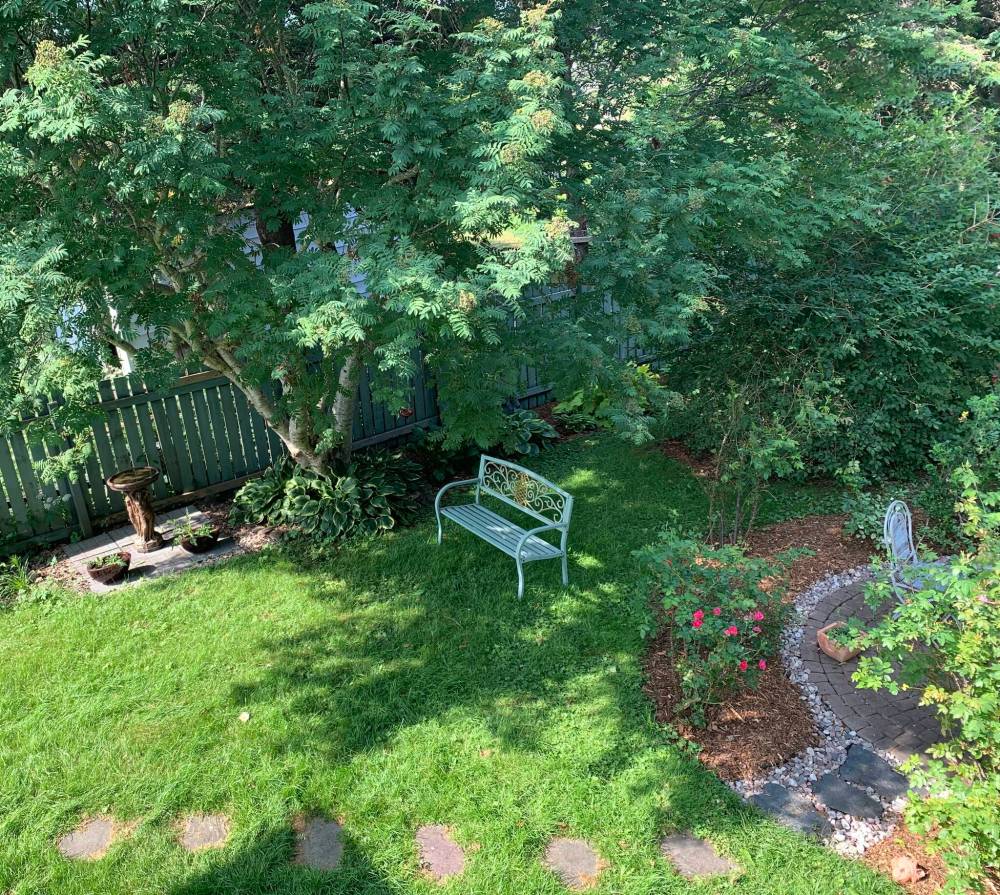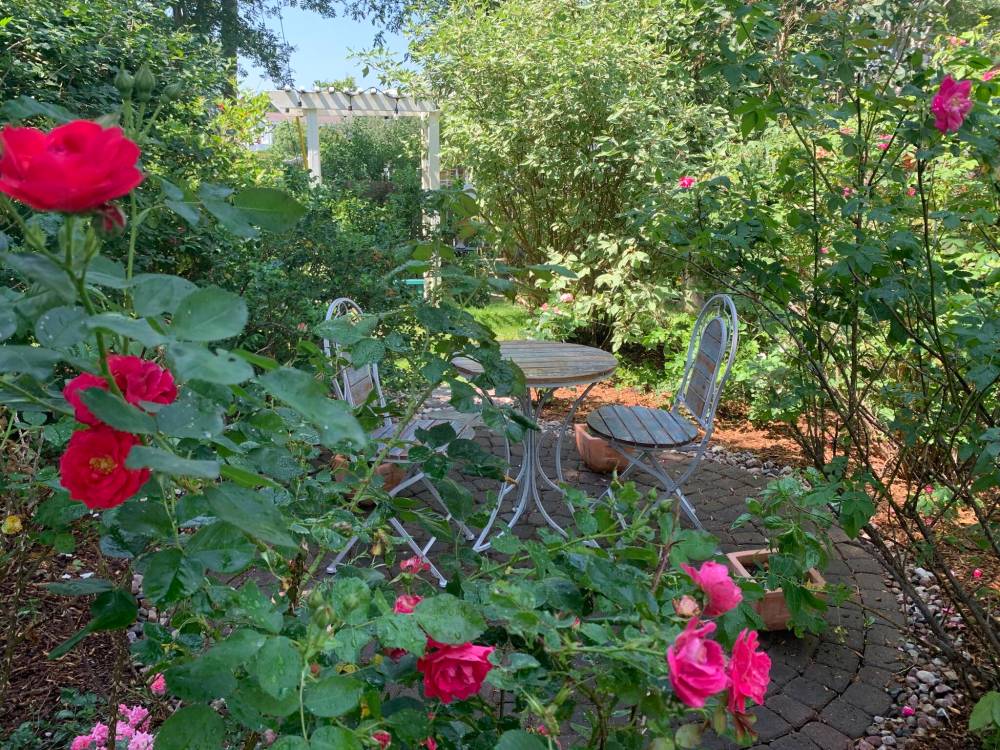Finding tranquility in the garden
Advertisement
Read this article for free:
or
Already have an account? Log in here »
To continue reading, please subscribe:
Monthly Digital Subscription
$0 for the first 4 weeks*
- Enjoy unlimited reading on winnipegfreepress.com
- Read the E-Edition, our digital replica newspaper
- Access News Break, our award-winning app
- Play interactive puzzles
*No charge for 4 weeks then price increases to the regular rate of $19.00 plus GST every four weeks. Offer available to new and qualified returning subscribers only. Cancel any time.
Monthly Digital Subscription
$4.75/week*
- Enjoy unlimited reading on winnipegfreepress.com
- Read the E-Edition, our digital replica newspaper
- Access News Break, our award-winning app
- Play interactive puzzles
*Billed as $19 plus GST every four weeks. Cancel any time.
To continue reading, please subscribe:
Add Free Press access to your Brandon Sun subscription for only an additional
$1 for the first 4 weeks*
*Your next subscription payment will increase by $1.00 and you will be charged $16.99 plus GST for four weeks. After four weeks, your payment will increase to $23.99 plus GST every four weeks.
Read unlimited articles for free today:
or
Already have an account? Log in here »
Hey there, time traveller!
This article was published 07/08/2024 (460 days ago), so information in it may no longer be current.
Two plump robins are singing in the garden, the burbling, liquid-throated song that only robins have.
One is splashing luxuriously in the birdbath depicting the Three Graces — the daughters of Zeus: Euphrosyne, Aglaia and Thalia, representing mirth, elegance, youth and beauty.
The other robin is doing a stately walkabout around the rose bush that produces pink and yellow blossoms. From behind, it appears to be wearing an elegant black morning coat, gliding across the grass with its rusty waistcoat protruding.

Pam Frampton photo
An overhead view, with the path where the author walked down the aisle.
I could sit and watch this garden for an eternity.
But, as Rudyard Kipling once observed, “Gardens are not made by singing ‘Oh, how beautiful!’ and sitting in the shade.”
There’s work to be done here today, and every day, if you only had the time.
This garden in our little corner of the world in St. John’s, N.L., has been a passion project for my husband and me.
We started with a blank canvas in 2006 — a rough square bounded by a handful of trees: one conifer, several maples and a few dogberry trees (also known as rowans or European mountain ash).
Anyone who has ever tried growing anything on the east coast of Newfoundland is familiar with its notoriously poor and stony soil. One corner of the yard soon became a rock pit — the place we threw the multitude of stones turned up with every thrust of the spade.
Any prized flat rocks were set aside until my husband had enough for the walkway he envisioned. He measured the length of my stride and we placed the stones in one day, levelling out the soil with sand, creating a meandering path of 25 steps leading to the very heart of things.
It was the path I walked to our wedding, which was held in the middle of the cobblestone circle we made, surrounded by a rose garden I had first imagined on the back of a napkin when we were still in the dreaming stages.
It’s where we sit now after a hard day’s labour of weeding and pruning and planting in a space that seems to have gone from infancy to mature garden in no time at all.
And those are the best of days.
That’s the thing about gardens: they can demand so much of your time but also give you so much pleasure that the many hours spent bent to the earth — girded with the gardening trinity of gloves, kneeler and trowel — feel fleeting, and you’d give anything to do it all over again.
Writers write a lot about gardening, and no wonder. Both pursuits have things in common.
I choose perennials like I choose words — carefully. When I’m not always sure I’ve made the right selection, I try to set them down in a reasonable arrangement and hope they have the impact I was going for.
It still amazes me, when I look around the garden in summer, that there’s always something in bloom, even though in St. John’s all the expert advice about plants that are “hardy-in-zone-such-and-such” and “prefer-full-sunlight-to-part-shade” means nothing in this rugged, gale-lashed place where “spring” might entail three straight months of numbing rain, drizzle and fog.

Glenn Payette photo
The inner sanctum — a nice place to relax at the end of a summer’s day.
And yet.
The forsythia, lilacs, peonies and rhododendrons have lost their blooms. The weigela was a showy triumph of fuchsia trumpet flowers three weeks ago but is now subdued.
It is the roses’ turn to take centre stage — old-fashioned white heavily scented ones, peach and red blossoms, off-white tender tea roses, and the delicate pale pink rose bush I planted in memory of my sister. Some will bloom in November, until their petals scatter to the ground in a swan song of fragrant confetti.
The rock pit is a rock garden, now, where the hostas have sprouted spikes of white bells. The lamb’s ears are clustered in front of a dogberry tree — silvery-green sentinels with cascades of tiny purplish-pink flowers like frilled skirts.
Yellow loosestrife (Lysimachia) — named for the Macedonian King of Thrace, a successor to Alexander the Great — has conquered this space with its spears of star-shaped flowers.
I look at what we have made together — weeds and overgrowth notwithstanding — and think of Victor Hugo, writing in Les Misérables: “A garden to walk in and immensity to dream in — what more could he ask? A few flowers at his feet and above him the stars.”
It is an oasis; our own small sanctuary.
Last night we sat on the deck and listened to the wind whooshing through the trees, saw the shrubs turn into silhouettes, watched the sky darken until the stars of the Big Dipper winked overhead.
The best of days always begin and end in the garden.
Pam Frampton is a freelance writer and editor who lives in St. John’s.
Email pamelajframpton@gmail.com X: pam_frampton

Pam Frampton is a columnist for the Free Press. She has worked in print media since 1990 and has been offering up her opinions for more than 20 years. Read more about Pam.
Pam’s columns are built on facts, but offer her personal views through arguments and analysis. Every column Pam produces is reviewed by an editing team before it is posted online or published in print — part of the Free Press‘s tradition, since 1872, of producing reliable independent journalism. Read more about Free Press’s history and mandate, and learn how our newsroom operates.
Our newsroom depends on a growing audience of readers to power our journalism. If you are not a paid reader, please consider becoming a subscriber.
Our newsroom depends on its audience of readers to power our journalism. Thank you for your support.

